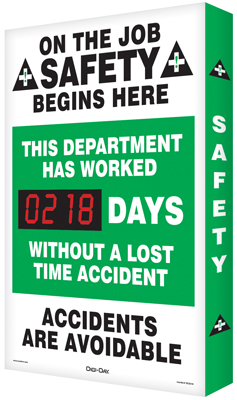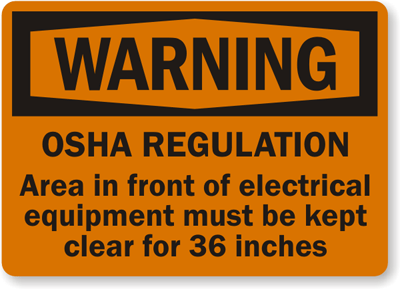New Study Finds OSHA Inspections Reduce Injury Rates, May Be Flawed

A recent study found that OSHA inspections are effective at inducing lower workplace injury rates.
June 11, 2012 — Since the core mission of the Occupational Safety and Health Administration (OSHA) is to “ensure a safe and healthy workplace for every working man and woman in the Nation,” it’s only logical to wonder if OSHA is actually effective. A recent study conducted by the RAND Corporation concluded that OSHA inspections have been substantially beneficial to workplaces. Between 1998 and 2005, the study finds, post-inspection injury rates decreased by 19 to 24 percent. However, though not necessarily false, the study’s positive results should be taken with a grain of salt. The study draws much of its relevance through comparison to a 2005 study conducted by two of the same authors, Wayne Gray and John Mendeloff. The 2005 study examined post-inspection injury rates between 1979 and 1998, showing that OSHA inspections actually had diminishing effects on injury rates (from an average of about 20% in 1979–1985 to about 12% in 1987–1991 and to a nearly insignificant 5% in 1992–1998). The respective – and contrasting – conclusions may be a result of changes in OSHA’s regulatory processes, but there are other variables to take into account.

Before OSHA, posters like these would be hung in workplaces as safety reminders. This image is c. WWII.
Besides the complementarity of the observed time periods, the data sources are probably the most important difference between the two studies. The 2005 study used the national Bureau of Labor Statistics (BLS) Survey of Occupational Injuries and Illnesses (SOII) to determine injury and illness rates. The 2012 study, in contrast, used workers’ compensation injury data from Pennsylvania. In other words, these conclusions may in fact just indicate that Pennsylvania is not representative of the nation as a whole. However, the authors do not see this as a major issue, noting that “Pennsylvania is a federal OSHA state and there is evidence that federal OSHA enforcement practices are roughly similar across the 29 states where it operates.” This assumes, of course, that the only factors generating representative data are inspection processes themselves.
The study also showed that after two years without an inspection, injury rates would approximately return to their old, pre-inspection levels. Perhaps this is an indication that the effects of the inspection were wearing off, so to speak. This result could also suggest that biennial inspections would be ideal in order to minimize injury rates. But that could also depend largely on the type of inspections used.

Job safety scoreboards can add a form of encouragement to keep injury rates low in the time period after an OSHA inspection. (via JobSafetyScoreboards.com)
The authors also separately analyzed multiple inspection scenarios. They hoped to determine in differences in efficacy based upon both the type of inspection and follow-up used. The data included programmed inspections that were based on industry and firm hazardousness, complaint inspections driven by workers’ complaints about a hazard, and referral inspections, based on a health inspector’s referral to a safety inspector. The data also included information about whether a penalty had been assessed with each inspection. The researchers concluded that programmed inspections with a penalty showed a significant annual decrease in injury rates for two years.. Programmed inspections and complaint inspections did not carry significant changes in injury rates. Within the data, if no penalty was assessed, no results were seen.
With the exception of its evaluation of penalties, the study did not explicitly address the economic effects that inspections could have on employers. However, a similar study conducted in California calculated that an OSHA inspection would save an employer an average of $355,000. Additionally, employers saved an average of 26% on workers’ compensation costs when compared to similar, non-inspected companies. Harvard Business School professor Michael Toffel, who co-authored the California study, noted that “if OSHA inspections conducted in all 50 states are as valuable as the ones we studied, inspections improve safety worth roughly $6 billion to employers and employees, ignoring pain and suffering.” When combined, the findings of these two studies paint a clear picture. OSHA inspections prevent injuries, thereby saving employers money in the form of workers’ compensation and additional labor costs.

President Richard Nixon signs the Occupational Safety and Health Act into law in 1970. (Image from the SmartSign archives)
Since the study suggests that biennial inspections would be optimal, then the feasibility of such frequent inspections needs to be examined. The study intimated that larger facilities received more frequent inspections than smaller facilities. This is likely because unsafe working conditions could pose a greater risk if more people are exposed to them. However, it doesn’t address the resources that OSHA has at its disposal to conduct more inspections.
Even if it is feasible for inspections to occur every two years, it would still be ideal for all parties to find a way to extend the life of an inspection. Injury rates usually rebound to their initial levels after about two years without an inspection. After that point, it may be safe to say that the inspection and its effects have faded out of the collective memory of both employers and employees. As such, measures that serve as reminders of OSHA’s watchdog presence may be a way to extend the perceived effects of an inspection. Signage, for instance, may help fill this void. Although OSHA regulations require signage for many industries and situations, replacing or moving OSHA-compliant signs to more prominent locations may reinforce safe habits and work procedures. Even using something like a safety scoreboard can add an additional reminder of the safe practices used in the workplace. Similarly, using safety rewards programs can provide both an incentive for safe behaviors and create a culture of safety within the workplace. All of these initiatives can have effects that last longer than an inspection, at least by the standards of the study.

OSHA requirements dictate the presence of warning signs in some situations, often to keep certain areas clear of hazards. (via MySafetySign.com)
Based on the methodology employed, there are a few reasons that the results of the study may be called into question. As hinted earlier, the data may not be as generalizable as the authors claim it is. Even if the inspection process is more or less identical, there is no indication that employers in any of the other 38 states with national OSHA inspections would respond in the same way. The study is also limited in its scope. Though results were generally significant, the study found that there was no significant change in post-inspection injury rates in workplaces with over 250 or under 20 employees. Workplaces with between 21 and 250 employees made up 61 percent of the sample. If the results are only significant for these groups, inspection status could have little predictive power of injury rates. Mendeloff conjectured that OSHA inspections could leave certain functions untouched in larger places. Additionally, larger workplaces often have safety programs in place and more frequent inspections, so they may have already had low injury rates.
One final consideration further throws off the generalizability of the study: The study excluded any company with more than one establishment in the state of Pennsylvania. This was done to be able to pinpoint exactly where various violations occurred, it played the role of omitting a number of larger companies, though some were still included, assuming they only had one location in the state of Pennsylvania. In other words, the high number of qualifications that the study requires for inclusion makes the results speculative, as they may not be generalizable to all states, or even to Pennsylvania as a whole.
A study predicated on the exclusive effectiveness of inspection processes cannot control for every lurking variable in order to establish causation. Though the study carefully avoids the word “cause,” preferring to tiptoe by instead labeling “effects” and “impacts” of inspections, it is clear that those conducting the study want the reader to believe that the inspections are the reason for these decreases in injury rates. While they may be right, the standard to prove such a thing is far higher than the study provides. The only thing that the study shows with any definitude is that the specific sites included in the dataset experienced lower injury rates in periods after inspections.
– T. Caruso














